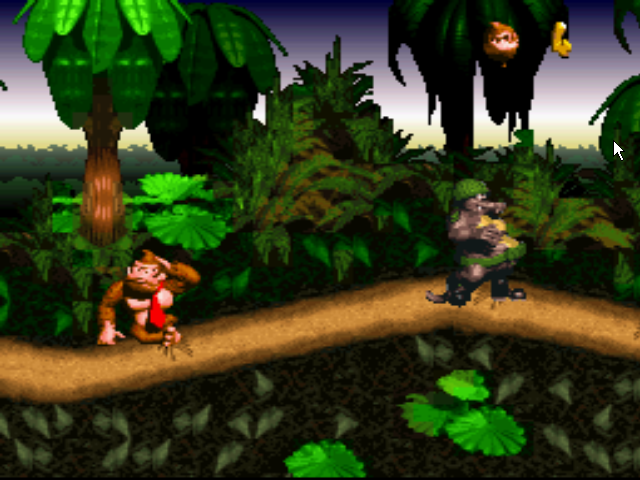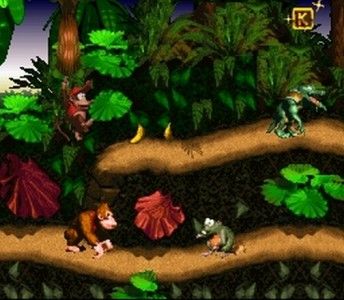This post has not been edited by the GamesBeat staff. Opinions by GamesBeat community writers do not necessarily reflect those of the staff.

When looking at Donkey Kong Country, one might assume that such a rich-looking gameplay environment would require a large arsenal of moves to conquer. Legendary developers Rare, however, applied simplicity where it mattered the most: the controls. While many developers tried to make the most out of the Super Nintendo's six-button controller, Rare utilized only two — one button for rolling, running and picking up barrels and one for jumping. Sound familiar?
Super Mario World is considered by many to be the pinnacle of 16-bit platforming. Nintendo took everything that guaranteed Super Mario Bros. 3's spot as 8-bit king and added to those classic mechanics — new moves, power-ups, and, of course, Yoshi. While no one would dare suggest that Super Mario World took the series one step too far in terms of its controls, one can't help but wonder if Rare's king of the jungle cleverly took the crown from the athletic plumber's head without anyone noticing.
Released in 1994, a full three years after the North American release of Super Mario World, Donkey Kong Country wowed all those who played it with stunning pre-rendered graphics and a rich soundtrack. Understandably, those audio and visual aspects dominated most players' nostalgic memories of the game, but upon returning to the title in present day, most will likely highlight Country's greatest achievement: the simple yet incredibly functional and versatile controls.
For those unfamiliar with Country's controls, holding down the SNES' Y button allows the game's two playable characters to run. Approaching a barrel with the same button held down will pick it up. Releasing Y throws the barrel. Pressing B makes characters jump. This instantly accessible control scheme matches Super Mario World's system.
Rare's founders would unlikely argue against the strong similarities between Country and World. The almost cheeky nod to Super Mario World's name suggests that the similarities were not only acknowledged but completely intentional. Turtles are now crocodiles. Shells are now barrels. Coins are now bananas. And the simple plumber is a laid-back, neck-tie-wearing gorilla. Yet Country allows for greater maneuverability with a simplistic control scheme that has nothing added but the ability to roll.
Rolling is a flexible move with several uses. Firstly, it can quickly increase the acceleration of the primate protagonists' movement and, if performed straight into enemies, defeats them while increasing the length and the speed of the roll. A roll can also be jumped out of, allowing large expanses of horizontal space to be traversed.

Rare didn't simply take their roll and combine it with Super Mario Bros. simple run-and-jump mechanics. The developer fine-tuned everything to a level that offered fluidity rarely seen in any game of the same genre. From a static position, our Kongs can instantly reach a maximum speed, which can just as easily be negated by rocking the D-pad in the opposite direction or by jumping. No obstacles exist between a player's mind and the sprite on screen with the only challenges coming from the level design itself. In Donkey Kong Country, the jungle is your playground, and you are the king.
Super Mario World is the more challenging game in terms of precision jumping, yet players' control over the eponymous character is hindered by the intentionally placed momentum and skidding that results from trying to slow down. This mechanic does not devalue the experience, but it stands in the way of the fluidity that Country achieved.
Both Super Mario World and Donkey Kong Country are undisputed masterpieces of 2D platforming and game design. In my opinion, however, the latter proves that simplicity truly equals success, and, in a ironic twist of fate, Mario's very first adversary beat him at his own game.
